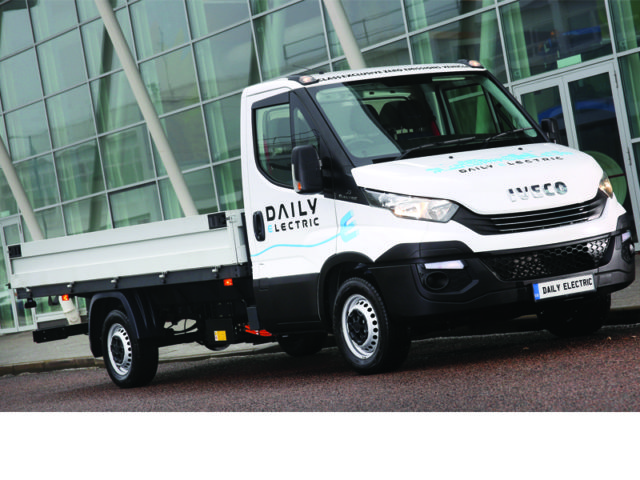Iveco has improved its electric Daily option for last mile delivery, says Dan Gilkes.

With inner city air quality and pollution a growing concern for many authorities, the scrutiny on diesel-powered delivery vehicles is becoming increasingly critical. Indeed with four major cities now planning to ban diesel by 2025, manufacturers and delivery businesses are increasingly looking to alternative fuels as a way of keeping goods on the move.
Iveco has for many years offered a number of power sources for its vans and trucks and has recently updated both its Daily Electric and Natural Power CNG vans. Daily Electric can be provided for both a 3.5-tonne or a 5.0-tonne chassis as not for cab or panel van.
Unlike most competitors Iveco continues to use a Sodium Nickel Chloride battery, which it claims is less affected by temperature and weather conditions, is 100% recyclable and offers a high 110Wh/kg energy density.
Depending on operating weight and chassis length, the vans can be equipped with one, two or three battery packs, delivering 44 miles, 95 miles or 125 miles of range respectively.
Recent updates to the batteries have resulted in a 20% life extension, and a 100kg increase in van payload. Chassis cabs running at 3.5-tonnes can now handle a body and payload capacity of 1,541-1,623kg depending on body length.
There have been big changes inside the van too, where Iveco has now integrated the TomTom Bridge tablet interface into the dash. This provides all operating information on power use and regeneration.
Daily Electric uses a variation of the automatic transmission lever used in Daily Hi-Matic. This offers the usual R-N-D gear controls, but also allows the driver to select Eco or Power modes. However while Power mode provides reasonable acceleration, Eco is very slow to respond and is really only suitable for congested Stop/Start urban travel.
By moving the lever to the left and then forward and backwards, the driver can also opt for three regenerative modes, from coasting through normal to extra braking. In both the standard and extra braking settings there is very little need to use the main foot brake, as the electric retardation is enough to slow the van in most cases.
The big problem for Daily Electric, as it has always been, is one of cost. A single battery van will set you back £60,000, two batteries is £80,000 and the three-battery van is £100,000. However the Government does now offer a plug-in grant of up to 20%, to a maximum of £8,000, on a 3.5-tonne model.
That rises to a maximum of £20,000 for vehicles above 3.5-tonnes GVW. The Government is also looking at the option of raising the GVW of an alternatively-fueled van from 3.5 to 4.25-tonnes for a car licence holder, which would make the van more viable as that would add 350-400kg of payload.
Add in a £4,000 a year saving on diesel and £3,000 of London Congestion Charge and things are starting to look a little more acceptable, with the van becoming cost-neutral after six years.
There are of course a few ‘ifs’ and ‘buts’ involved, and in all honesty a company’s desire to be seen to be green is probably going to be more of a decision maker.What we think
The improvements to Daily Electric have certainly made it a more viable proposition for UK urban delivery missions, if gross weights are raised.
For more exclusive road tests, click here.

